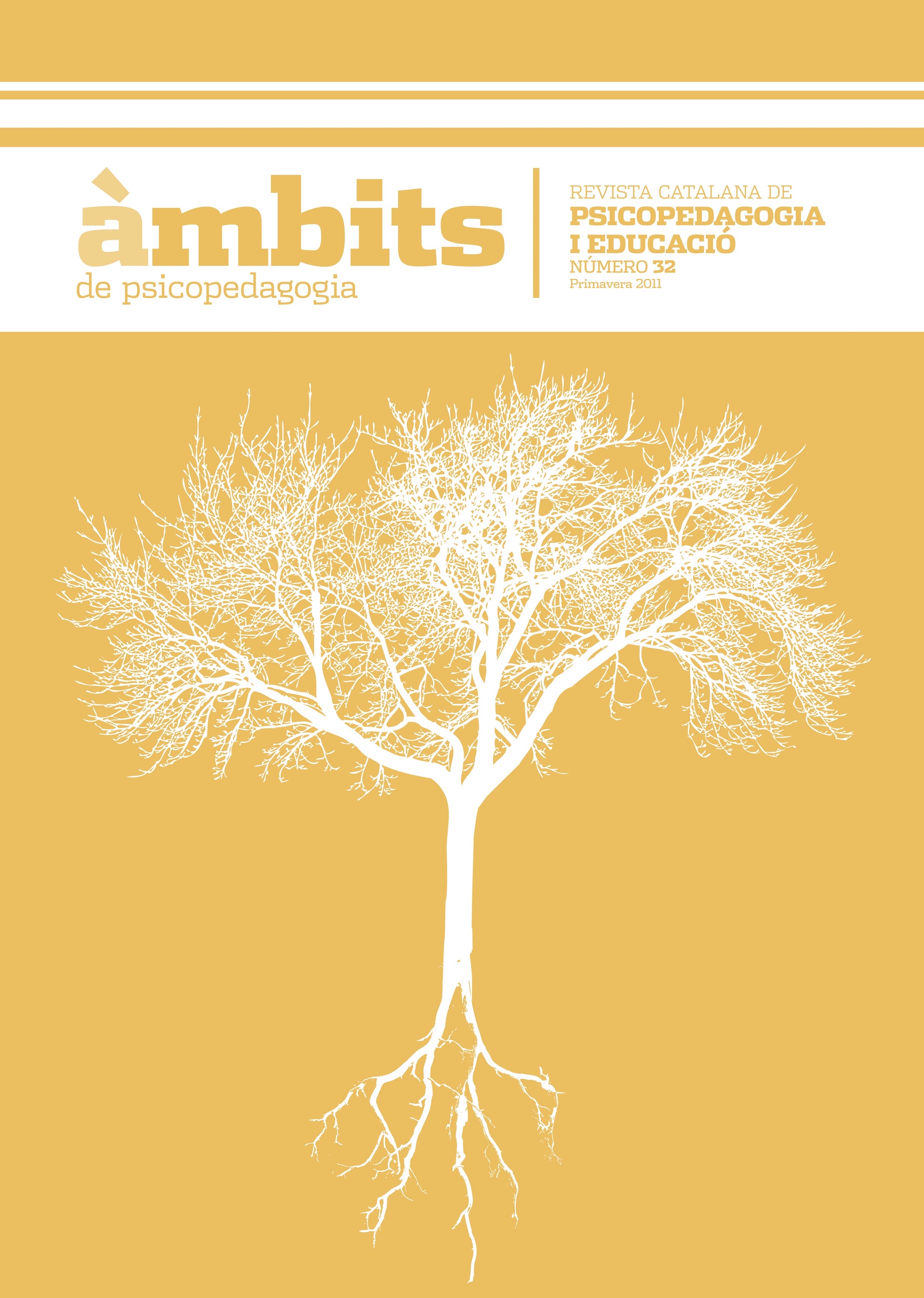Conductas de exclusión y maltrato entre iguales en el parvulario
Resumen
En este artículo se hace una reflexión en torno a la importancia de intervenir tempranamente en las conductas de rechazo entre iguales para prevenir la violencia y el maltrato entre iguales. Se hace referencia a una intervención realizada en una clase de parvulario. En esta experiencia se utilizaron técnicas sociométricas para conocer a los alumnos en situación de riesgo y mediante una observación sistemática en el patio se detectaron los alumnos implicados en conductas agresivas en el juego. Se observa una relación entre la situación de “rechazado” y la implicación en conductas agresivas hacia los iguales.
Citas
Barudy, J. (2010). 1r Congreso Europeo de Resiliencia. Barcelona: UAB 22 octubre.
Caplan, M.; Vespo, J., Peterson, J., Hay, D.F (1991). Conflict and its resolution in small groups one- and two-year-olds. Child Development, 62, pp 1513-1524.
Coie, J.D., Dodge, K.A., Coppotelli H. (1982) Dimensions and types of social status : A cross-age perspective Developmental Psychology 18 (4) pp 557-570
Coie, J.D., i Dodge, K.A. (1983). Continuities and changes in children’s social status: a five year longitudinal study. Merrill-Palmer Quartely, 29, pp 261-282.
Collell J., Escudé C. (2003). El maltractament entre iguals al parvulari: una aproximació al fenomen de la victimització relacional. Àmbits de Psicopedagogia, 7, pp 16-20
Crick, N.R., Casas, J.F. i Mosher, M. (1997). Relational and Overt Aggression in Preschool. Developmental Psychology, 33 (4), pp 579-588.
De Wall, C. Twenge J., Gitter S., Baumeister R. (2009) It’s the Thought That Counts: The Role of Hostile Cognition in Shaping Aggressive Responses to Social Exclusion . Journal of Personality and Social Psychology vol. 96 (1), pp 45-59
Dodge, K., Landsford, J., Burks, V.E., Bates, J.E, Pettit, G.S., Fontaine, R., Price, J.M. (2003). Peer rejection and social-information processing factors in the development of aggressive behavior problems in children, Child Development, 74 (2) pp 374-393
Garcia-Bacete, J. Sureda, I., Monjas Mª Inés (2010) El rechazo entre iguales en la educación primaria: Una panoràmica general. Anales de Psicología vol. 26, pp 123-136
Hartup, W. W. (1992). Having Friends, Making Friends and Keeping Friends: Relationships as Educational Contexts. ERIC Digest. Champaign, IL: ERIC Clearinghouse on Elementary and Early Childhood Education. ED, pp 345 854.
Katz, L. G., & McClellan, D. E. (1997). Fostering Children’s Social Competence: The Teacher’s Role. Washington, DC: National Association for the Education of Young Children. ED 413 073.
Kingston, L., Prior, M. (1995). The Development of Patterns of Stable, Transien, and School-Age Onset Agressive Behavior in Young Children, Child and Adolescent Psychiatry, 34 (3), pp 261-395.
Kochenderfer, B., i Ladd, G. (1996). Peer Victimization: Cause or Consequence of School Maladjustment Child Development 67, pp 1305-1317.
Perren, S. (2000). Kindergarten Children Involved in Bullying: Social Behavior, peer relationships, and social status (2000). Inaugural dissertation der Philosophisch-historischen Fakultät der Universität Bern.
Rojas Marcos, Luis (1998). Las semillas de la violencia. Madrid: Espasa-Calpe.
Villanueva, L., Clemente, R. i García-Bacete, F. J. (2000). Theory of Mind and Peer Rejection at School, Social Development, 9 (3).
Villanueva, L., Sorribes, S., Isert, E., (1997). Estabilidad de las técnicas sociométricas en la etapa de Educación Infantil. Jornadas de Foment de la Investigació. Universitat Jaume I.
Descargas
Publicado
Número
Sección
Licencia
Los autores/as conservan los derechos de autor y conceden a la revista el derecho de primera publicación de la obra, registrada bajo una licencia Creative Commons Reconeixement-NoComercial-Sense Obra Derivada. Esta licencia permite la descarga de las obras y que se puedan compartir con otros siempre que se reconozca la autoría, pero no permite que se modifiquen de ninguna forma ni ser utilizadas con finalidad comercial.















